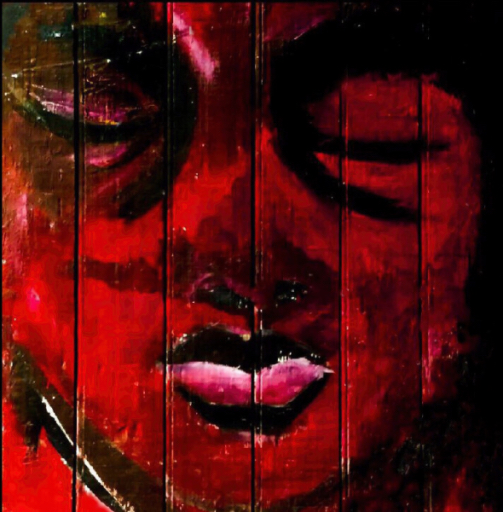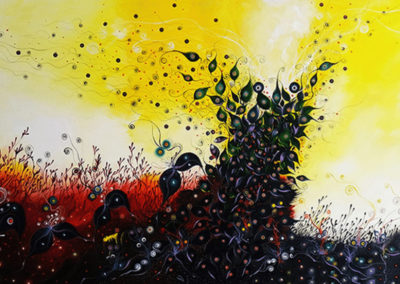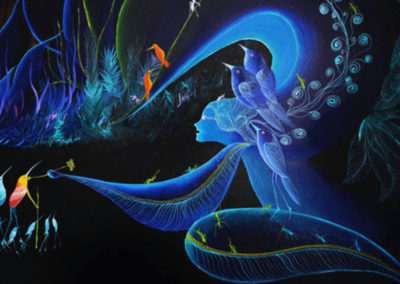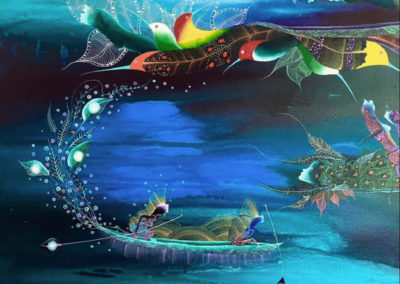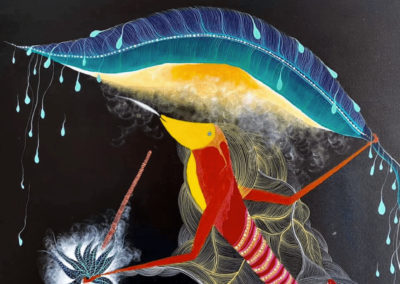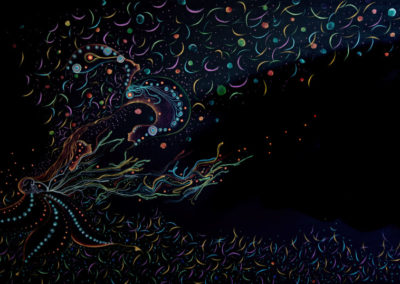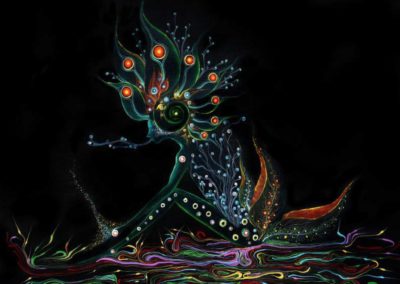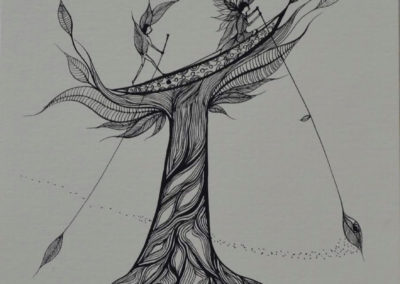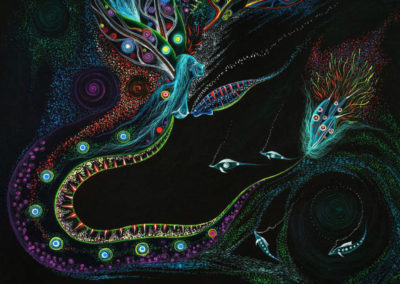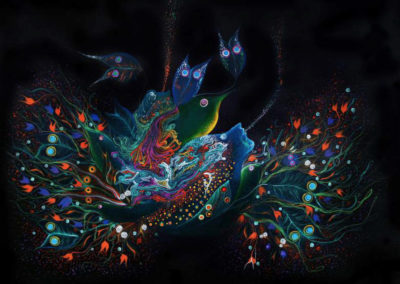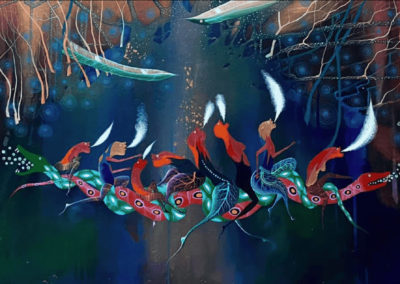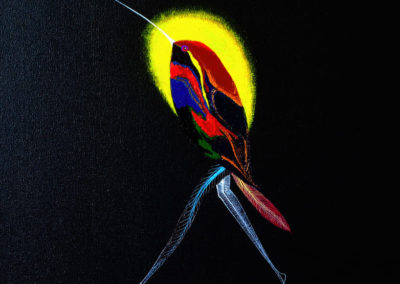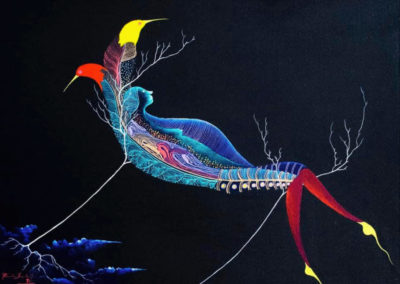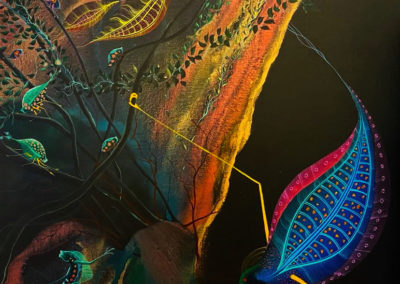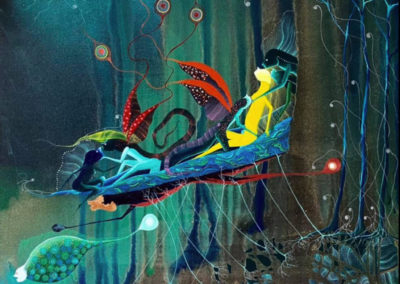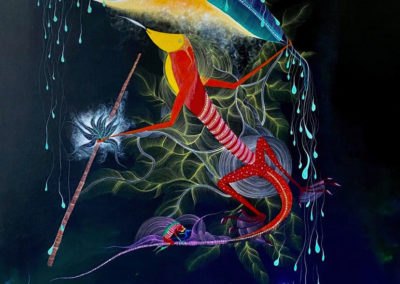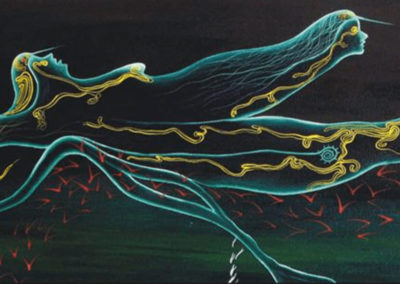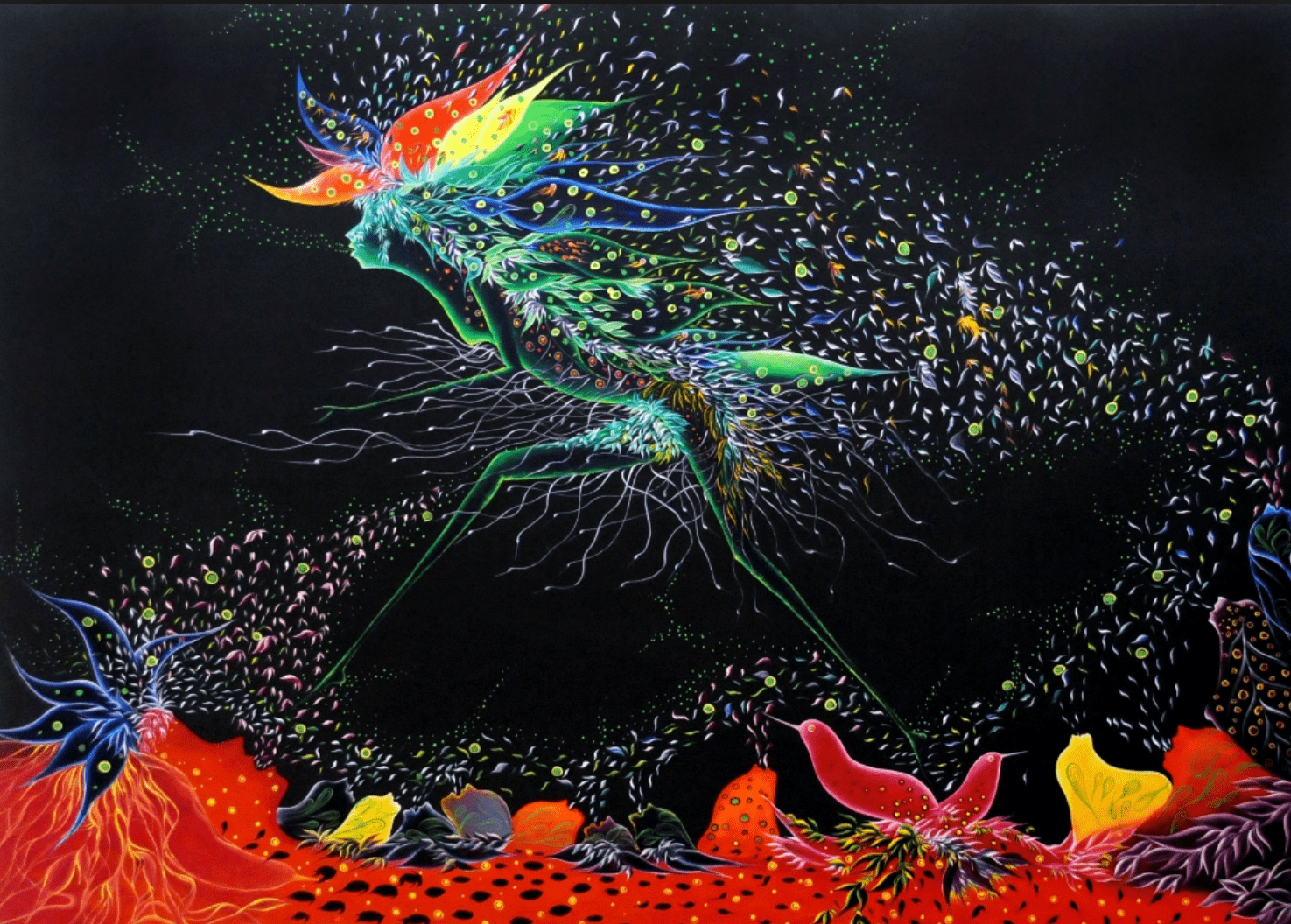
Rember Yahuarcani
Los mitos son los rios de nuestra memoria.
Son el origen.
En ellos está nuestro pasado,
presente y nuestro preciado futuro.
Los mitos son los rios donde navega la
memoria de nuestros abuelos y ahi debemos
pescar las palabras sabias de resistencia contra
el olvido, la discriminación y la exclusión.
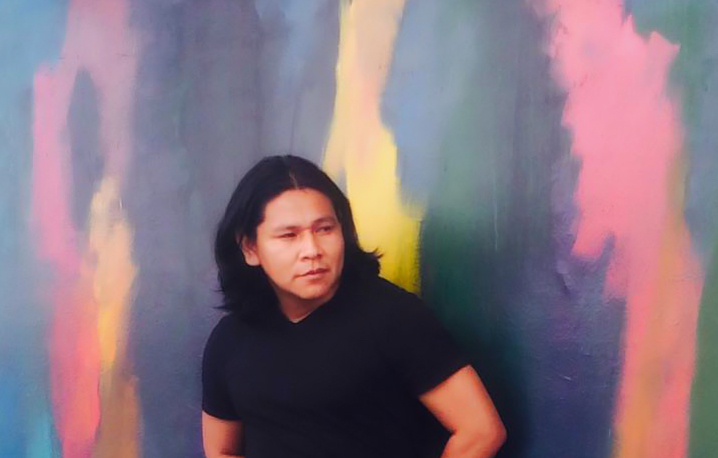

Óbras
Rember Yahuarcani, un artista del grupo étnico amazónico Huitoto, da vida a una profunda narrativa cultural a través de su rico viaje artístico.
Inspirándose en la visión cosmogónica inherente a su educación, Rember decodifica intrincadamente las tradiciones orales de su infancia, transformándolas en formas cautivadoras en el versátil lienzo de Llanchama (pergamino amazónico), la corteza de higuera preparada tradicionalmente.
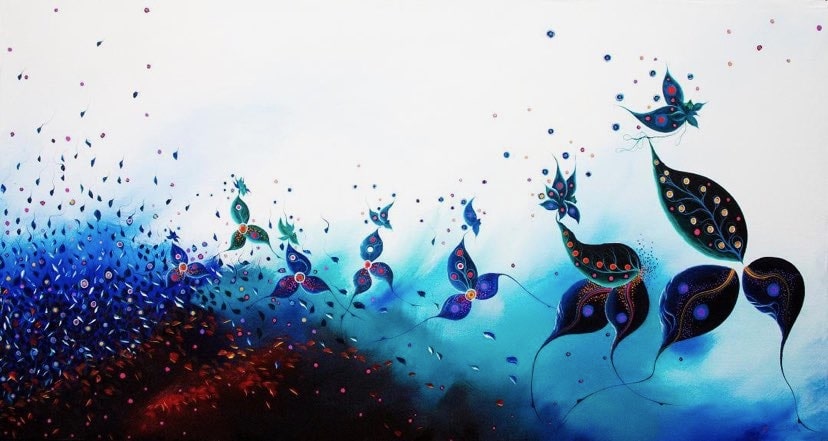
Cada uno de los seres alucinados de Rember tiene una historia única, capturada vívidamente mediante tintes vegetales o acrílicos.
Si bien inicialmente se tradujeron los mitos de la cosmogonía huitoto de manera lineal, este año se produjo un cambio transformador.
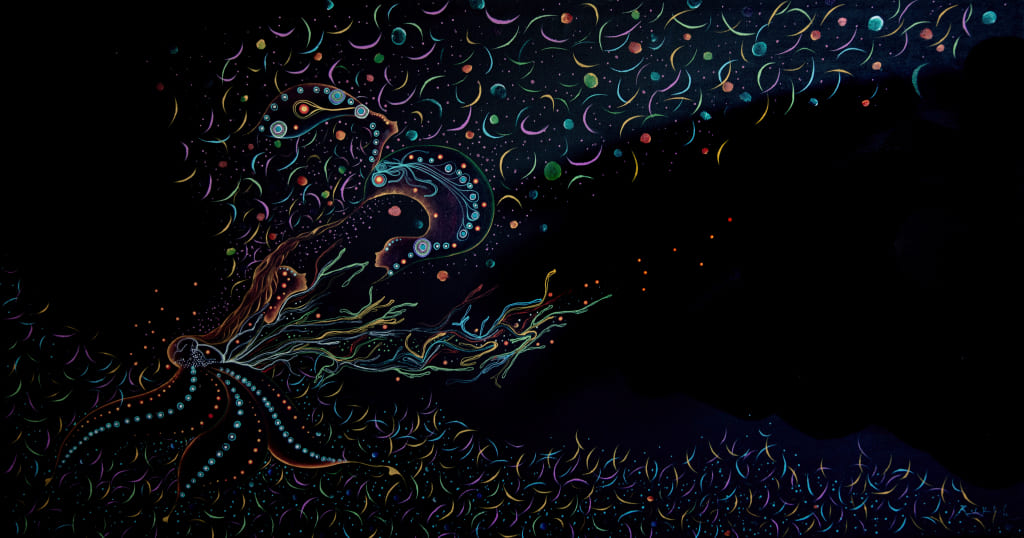
Apartándose deliberadamente del discurso narrativo, Rember explora el lenguaje pictórico de la tradición occidental.
Introduce personajes nacidos de su imaginación, aún atados a la cosmogonía Huitoto, e incorpora acrílicos a una paleta dominada por tintes vegetales.
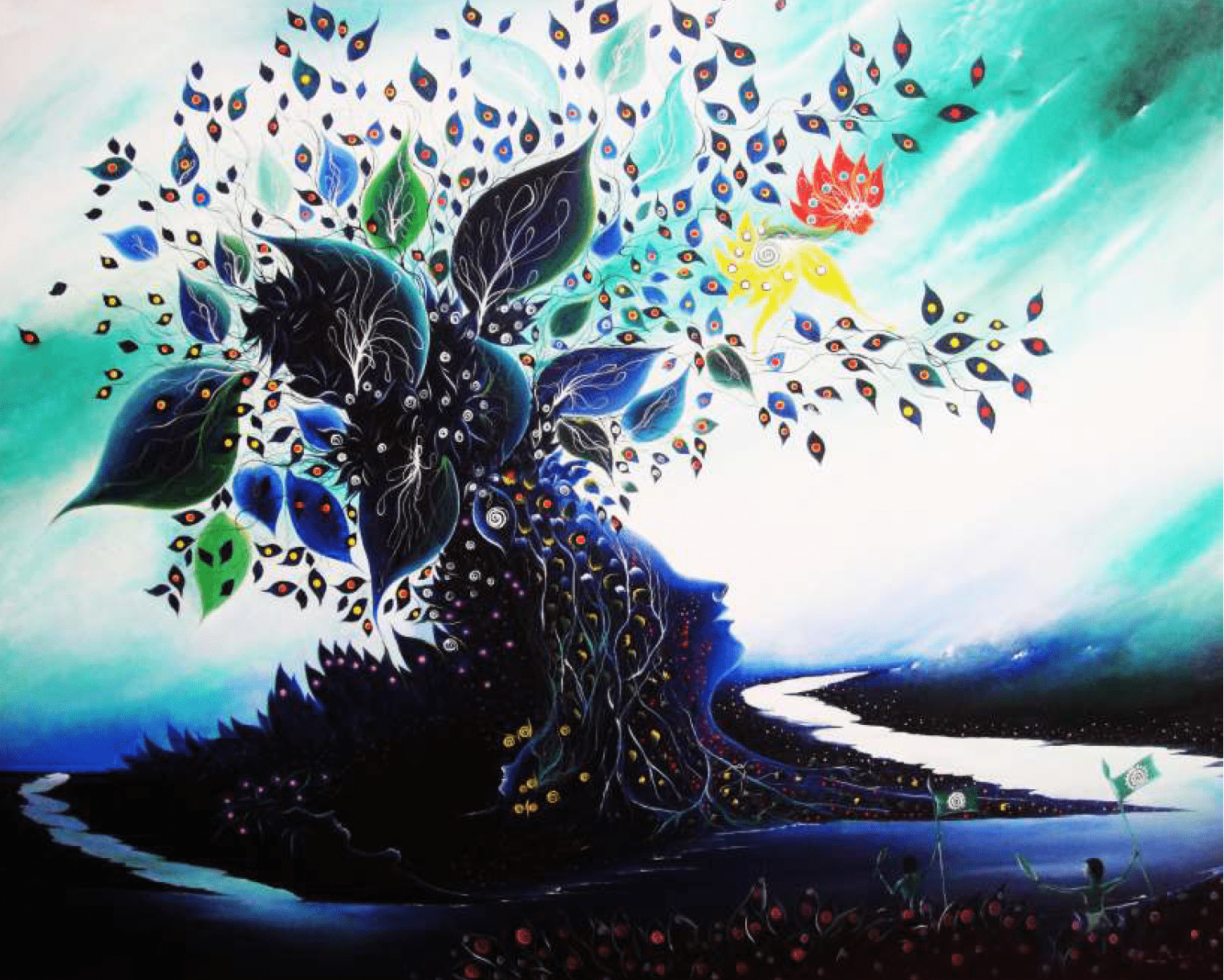
Más allá de expresar sus raíces culturales, Rember aspira a integrarse en una sociedad que no es inherentemente la suya.
Se esfuerza por compartir su historia, la del Huitoto, fomentando la comprensión y el reconocimiento en la comunidad en general.
A pesar de la acogida positiva en los espacios urbanos, Rember siempre siente la necesidad de volver a sus raíces una vez que concluyen las exposiciones.
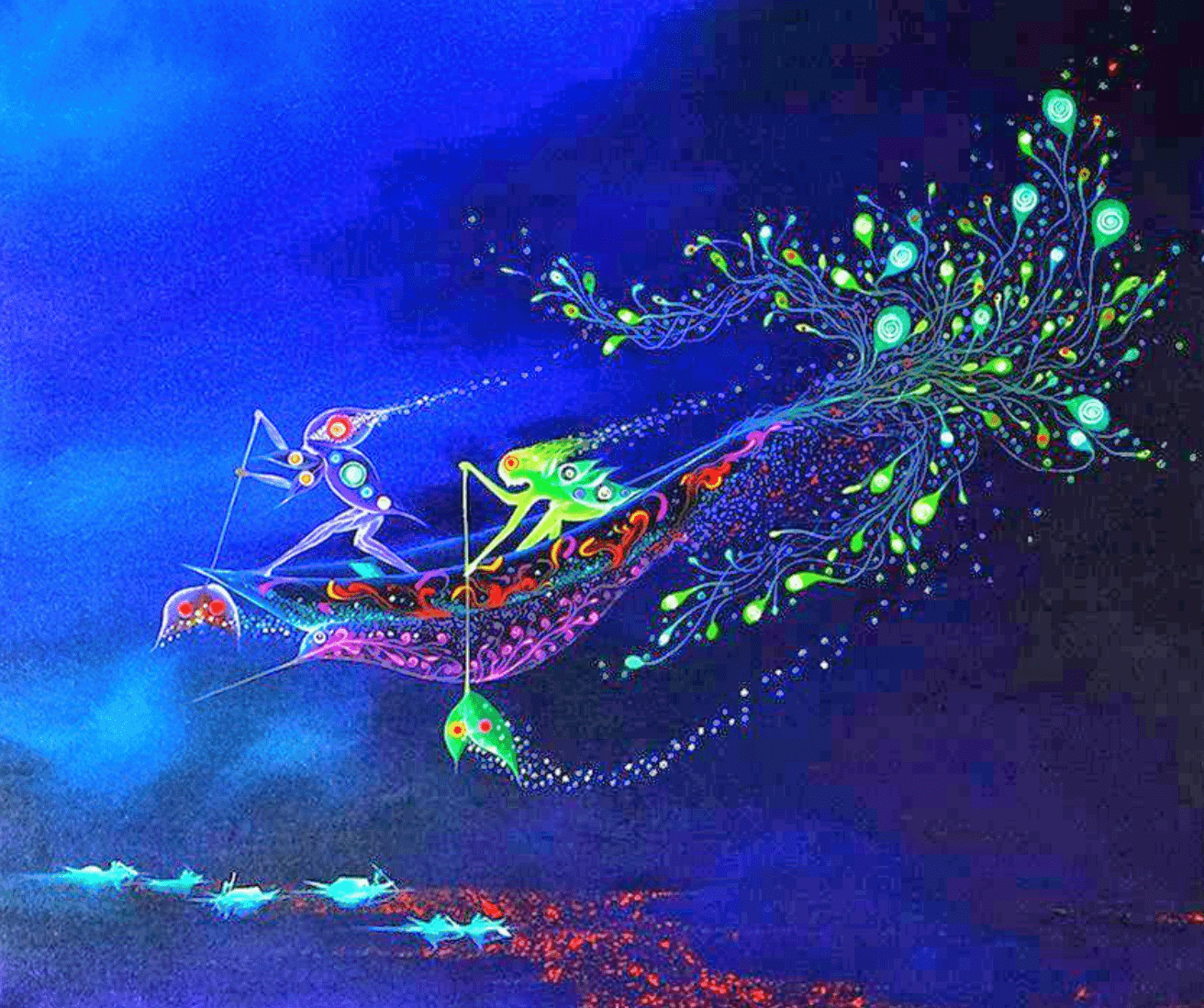
El proceso artístico de Rember consiste en tejer las historias contadas por su abuela en su lengua materna, traducidas por su padre.
Con la ascendencia huitoto alterada por el desplazamiento histórico, Rember consulta textos antropológicos para captar los significados matizados detrás de términos como «Buiñaiño», que puede simbolizar a la esposa del creador, un arco iris, la diosa de los seres que habitan en el agua y la palmera aguaje
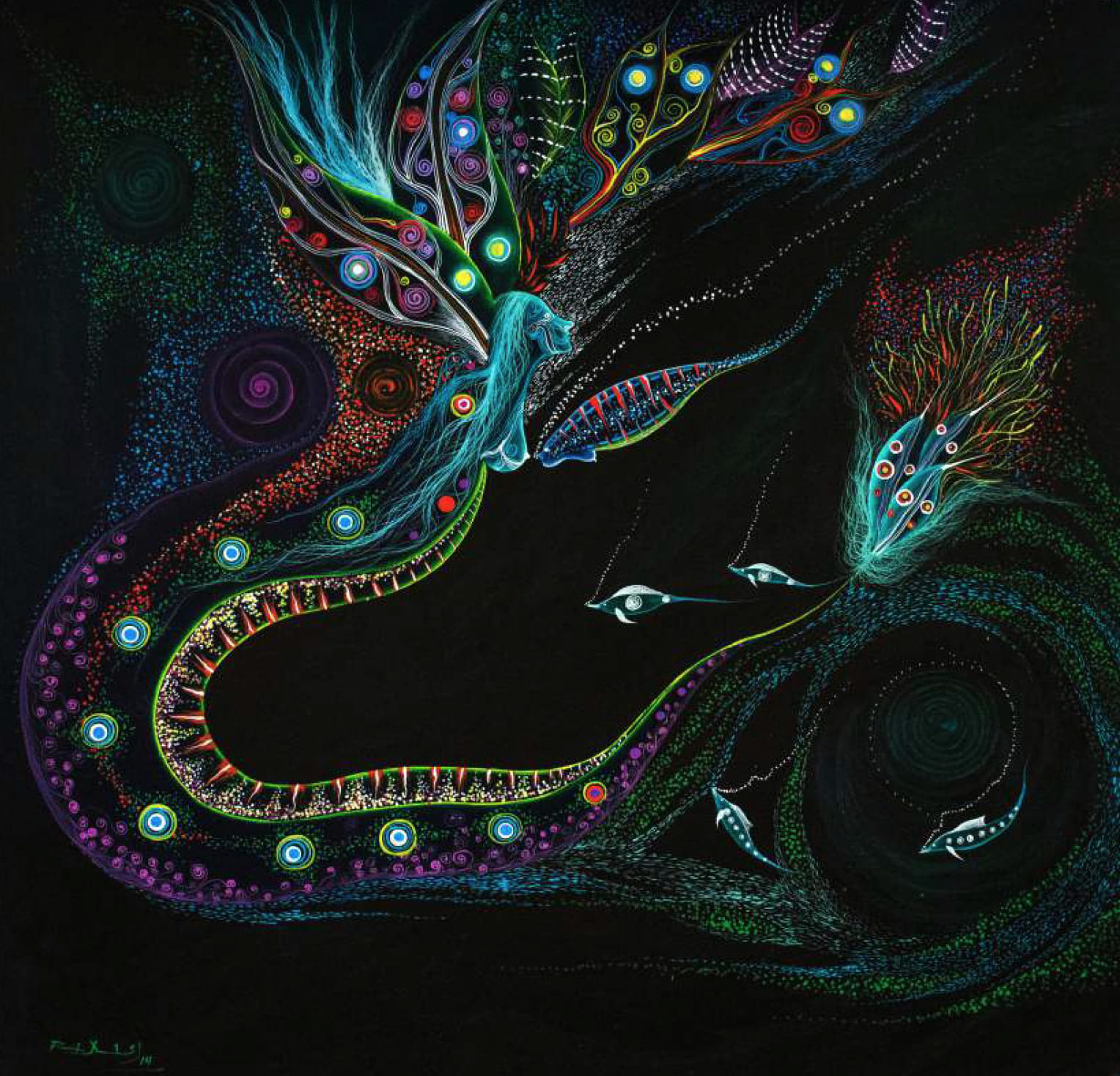
Las tensas llanchamas y los personajes capturados nos invitan a agudizar nuestros sentidos, cerrando la brecha entre la iconografía de Rember Yahuarcani y los ritmos de la vida urbana moderna.
En este intercambio, tanto el artista como el público se convierten en sujetos de estudio, enriqueciendo nuestro tapiz cultural compartido.

